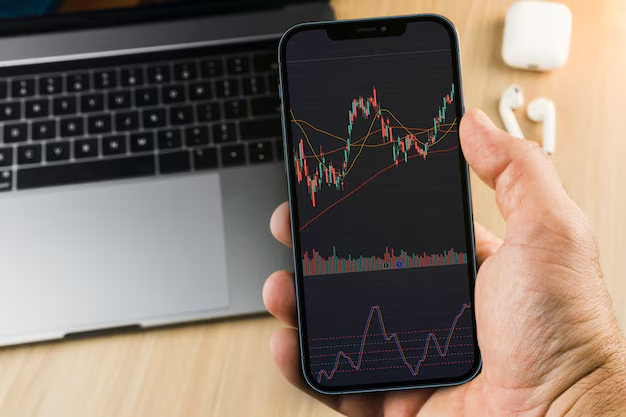Your Guide to Day Trading on Fidelity: Exploring Options and Strategies
Day trading can be a thrilling yet complex venture for those willing to dive deep into the financial markets. Among the brokerage platforms that emerge as a favorite for many traders is Fidelity. But can you effectively day trade on Fidelity? Let's explore this question and demystify the process while offering practical insights on how you can navigate day trading with this established brokerage.
What is Day Trading?
Before we dig into the specifics of using Fidelity, let's first define day trading. Day trading refers to the practice of buying and selling financial instruments within the same trading day. It often involves leveraging small price movements and executing multiple trades over short timeframes with the aim of profiting from these variations.
Why Day Trading Appeals to Many
- Potential for Fast Returns: Traders can capitalize on daily market fluctuations.
- Dynamic Environment: Ability to adapt quickly to ever-changing market conditions.
- No Overnight Risk: Positions are closed before the market shuts, avoiding overnight surprises.
Can You Day Trade on Fidelity?
Simply put, yes. Fidelity does allow day trading. However, there are some guidelines and strategies you need to understand to trade effectively on this platform.
Fidelity's Tools for Day Traders
Fidelity offers an array of resources and trading tools that are particularly advantageous for day traders:
- Active Trader Pro: This is Fidelity's flagship platform that provides real-time data, advanced charting tools, and customization options tailored for active traders.
- Comprehensive Research: Access to research reports and market analysis from leading institutions.
- Trading Education: Fidelity provides a wealth of educational content, from beginner guides to advanced trading strategies.
Pattern Day Trader Rule
One critical consideration is the Pattern Day Trader (PDT) rule. In the United States, traders need a minimum of $25,000 in their brokerage accounts to make more than three day trades within five business days. This rule aims to protect less experienced traders from the risks associated with frequent trading.
Key Takeaway: Day trading on Fidelity is accessible but requires at least $25,000 in your account to engage in regular day trading activities without restrictions.
Strategies for Day Trading on Fidelity
Understanding how to effectively employ day trading strategies on Fidelity can make a significant difference in your success.
Scalping
This strategy involves making dozens or even hundreds of trades in a single day to "scalp" a small profit from each. Scalping requires precision and speed, making Fidelity's Active Trader Pro an ideal platform with its real-time market data.
Momentum Trading
Momentum traders capitalize on strong market trends. This involves identifying stocks that are moving strongly in one direction on significant volume and riding the momentum for a short period.
Swing Trading
Although slightly longer-term than day trading, swing trading involves taking advantage of price swings. Traders hold stocks for several days to benefit from expected upward or downward shifts.
Risk Management: A Crucial Element
No strategy is complete without a robust risk management plan.
Setting Stop-Loss Orders
A stop-loss order protects you from excessive losses. Make use of Fidelity’s stop-loss capabilities to automatically sell your securities when they fall to a predetermined price.
Diversifying Trades
Never put all your eggs in one basket. Spread your investments across different sectors or industries to mitigate risk.
Managing Emotional Triggers
The psychology of trading is just as important as the mechanics. Maintaining discipline and emotional neutrality can prevent rash decisions that lead to losses.
Practical Tips for Day Traders on Fidelity
Here's a concise summary of useful tips for those keen on diving into day trading with Fidelity:
- Prepare Your Strategy: Clearly define your trading strategy before market hours.
- Stay Informed: Use Fidelity’s research tools to keep abreast of market trends and news.
- Monitor Costs: Trading costs can eat into profits, so be mindful of commissions and fees.
- Review Your Performance: Regularly analyze past trades to improve your strategy.
- Stay Educated: Leverage Fidelity’s educational resources to continually refine your skills.
Summary Table of Key Points
Here's a visual summary of key insights and next steps for potential day traders on Fidelity:
| 🧐 Aspect | 💡 Insight/Tip |
|---|---|
| Platform Tools | Use Active Trader Pro for real-time data |
| Day Trading Rule | Require $25,000 to engage in unrestricted day trading |
| Ideal Strategies | Scalping, Momentum Trading, Swing Trading |
| Risk Management | Utilize stop-loss orders |
| Emotional Discipline | Maintain objectivity to avoid emotional trades |
| Continuous Learning | Engage with Fidelity’s educational content |
Final Thoughts
Day trading on Fidelity is not just possible, it's potentially lucrative for those who approach it with knowledge and prudence. Understanding the tools at your disposal, being aware of the rules that govern your trading, and implementing sound strategies can enhance your potential for success. As you proceed, remember that consistent learning and adaptation are your allies in the fast-paced world of day trading. Utilize the resources Fidelity offers, and you could find yourself well-equipped to navigate the highs and lows of the market. 🌟

Related Topics
- Are Fidelity Advisors Fiduciaries
- Are Fidelity Financial Advisors Worth It
- Are There Foreign Transaction Feels With Fidelity Debit Card
- Are You Allowed To Day Trade On Fidelity
- Can a Non Us Citizen Open a Fidelity Account
- Can I Buy Bitcoin On Fidelity
- Can I Buy Crypto On Fidelity
- Can I Buy Foreign Currency At Fidelity
- Can I Convert Fcash To Money Market Fidelity
- Can I Find Fidelity Account With Joint Account